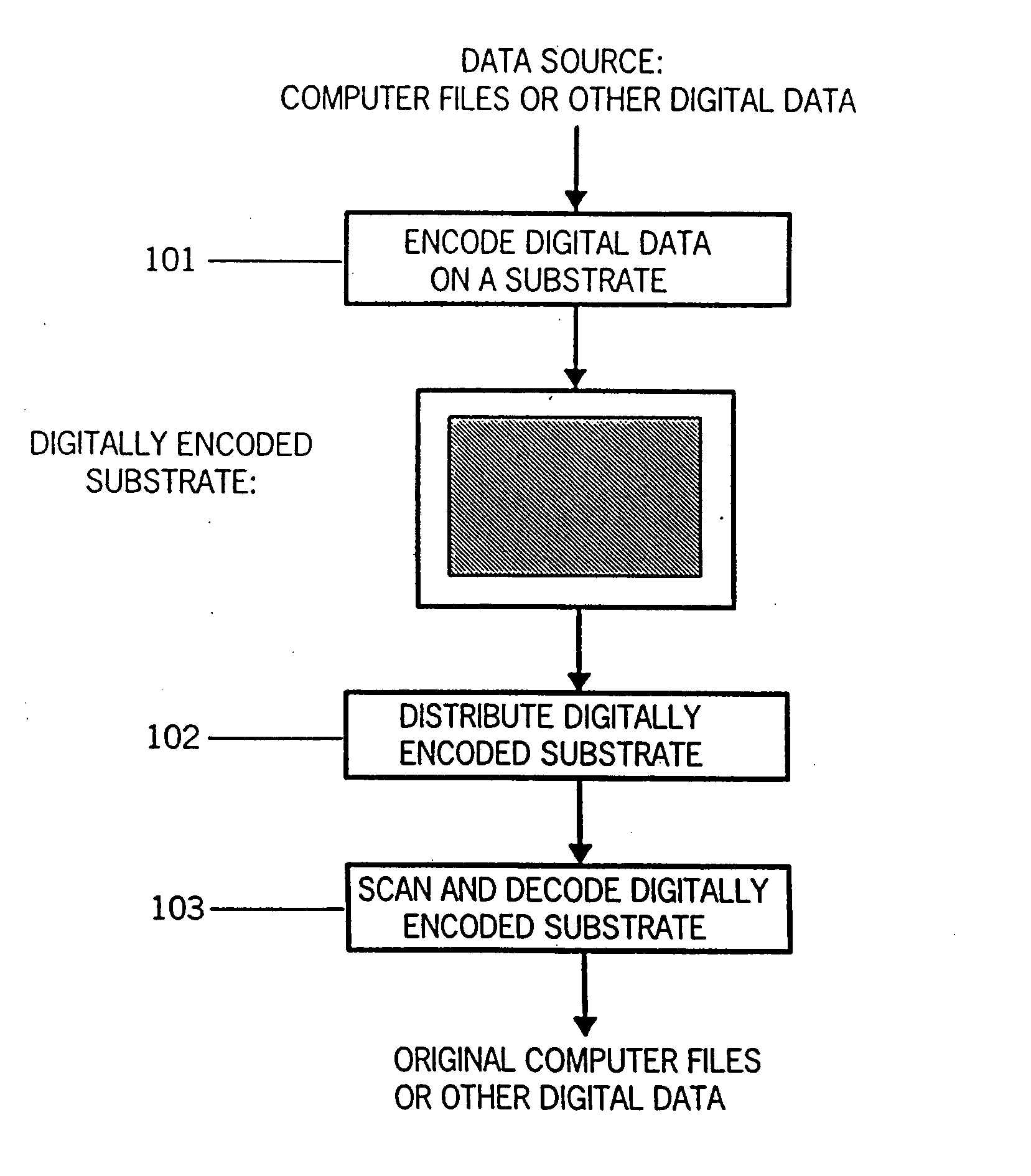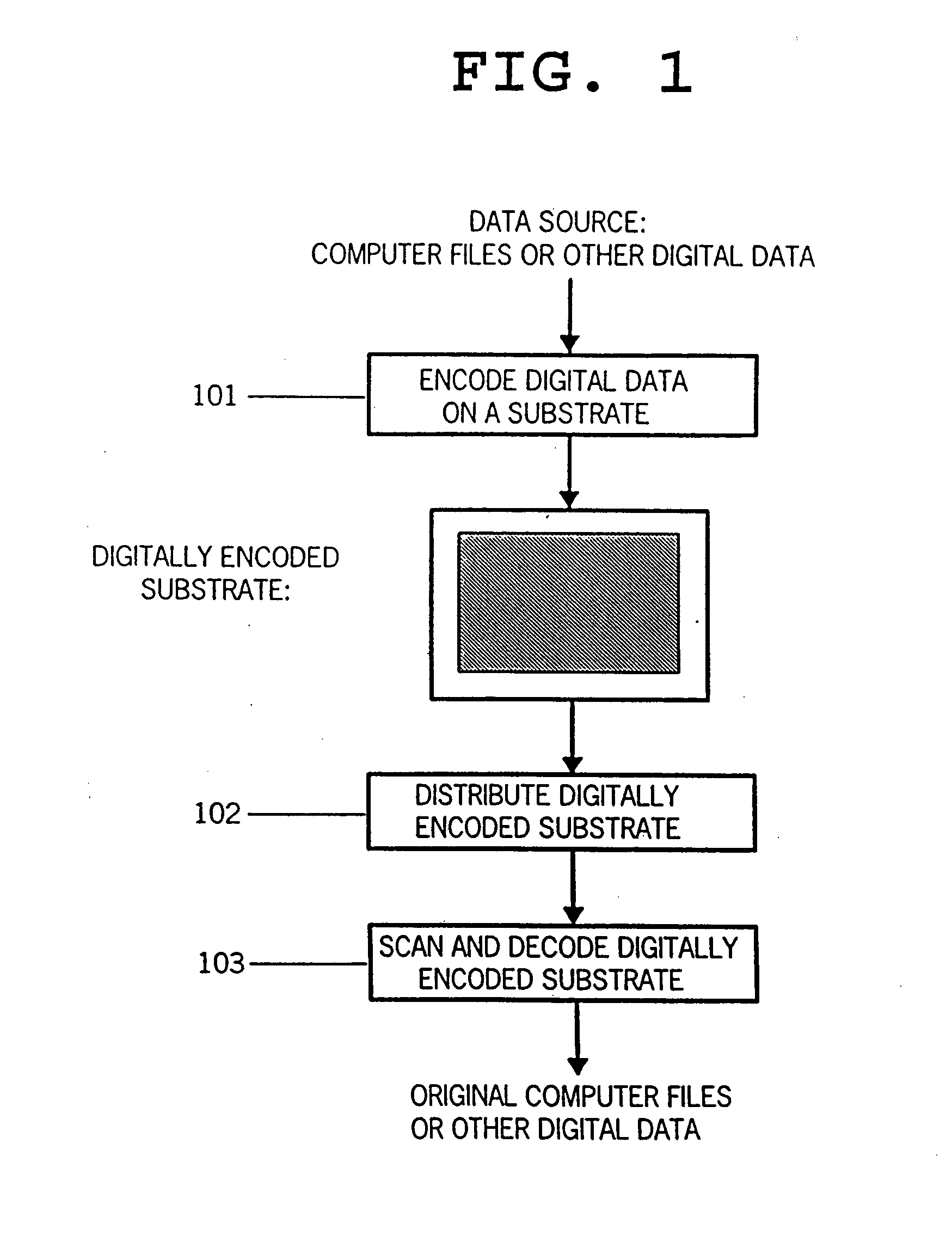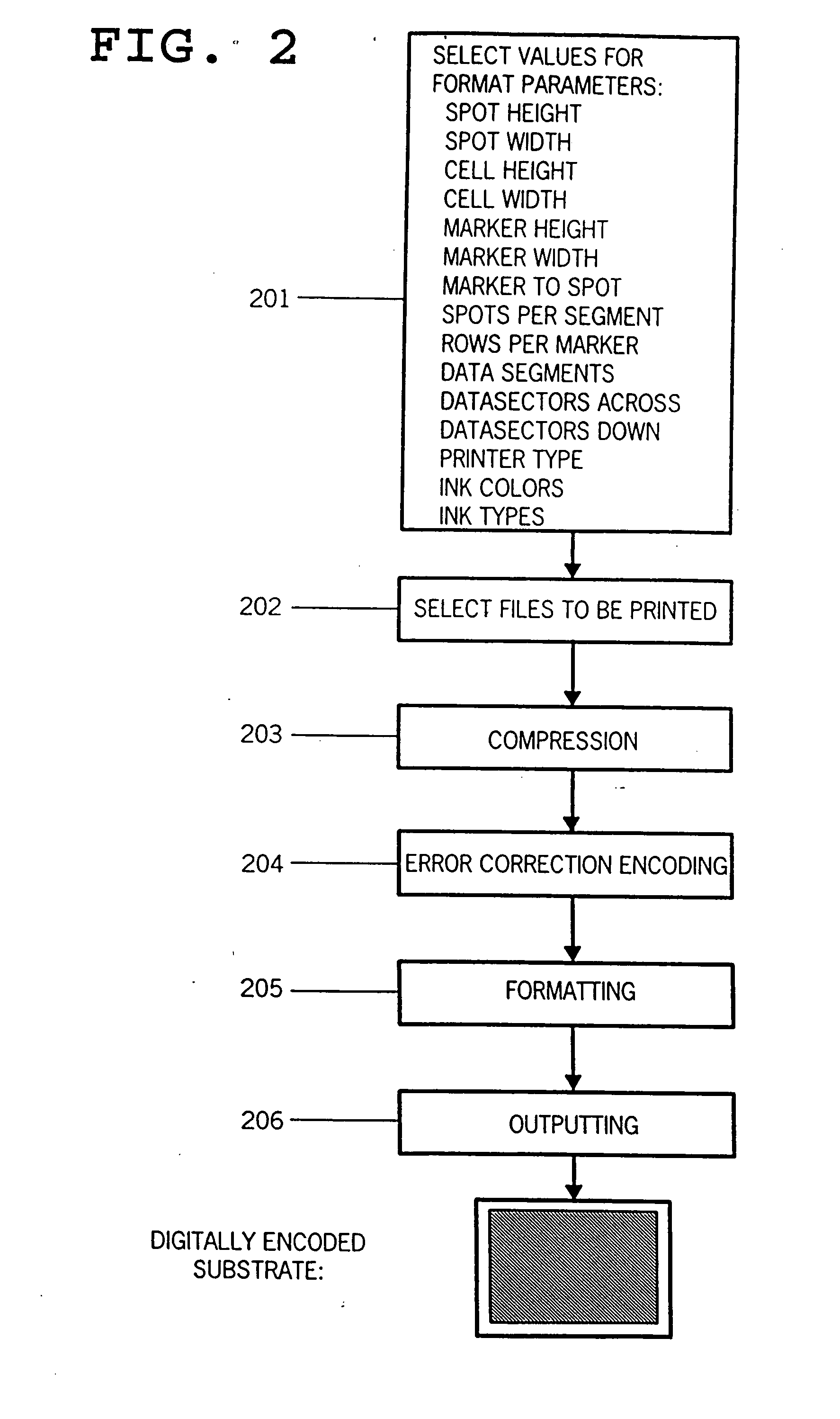Variable formatting of digital data into a pattern
a digital data and pattern technology, applied in the field of variable formatting of digital data into a pattern, can solve the problems of paper proliferation, no technology to date has significantly integrated the digital environment of the computer with the visual environment of written media, and none of these prior art methods, so as to achieve the highest flexibility, increase the density of data, and maximize the density of information
- Summary
- Abstract
- Description
- Claims
- Application Information
AI Technical Summary
Benefits of technology
Problems solved by technology
Method used
Image
Examples
Embodiment Construction
[0063] The preferred embodiments of the present invention will be described herein with reference to the drawings in the Figures and the source code of the digital data encoding and decoding software (“DEDS”) program contained in the Appendix, which is incorporated in and forms part of this application. The method and system of the preferred embodiments are generally incorporated in the DEDS program. The DEDS program does not yet include, however, all aspects of the preferred embodiment. For example, the format parameters of the preferred embodiment (as described by reference to FIG. 2) include Ink Colors and Ink Types, while the DEDS program does not yet include these parameters. Because inclusion of these additional parameters is advantageous, a future version of the software should include them.
[0064] In the preferred embodiment, the DEDS program is designed to operate on a personal computer having an 80386 model microprocessor or higher, at least 4 MB RAM, using the Windows® op...
PUM
 Login to View More
Login to View More Abstract
Description
Claims
Application Information
 Login to View More
Login to View More - R&D
- Intellectual Property
- Life Sciences
- Materials
- Tech Scout
- Unparalleled Data Quality
- Higher Quality Content
- 60% Fewer Hallucinations
Browse by: Latest US Patents, China's latest patents, Technical Efficacy Thesaurus, Application Domain, Technology Topic, Popular Technical Reports.
© 2025 PatSnap. All rights reserved.Legal|Privacy policy|Modern Slavery Act Transparency Statement|Sitemap|About US| Contact US: help@patsnap.com



